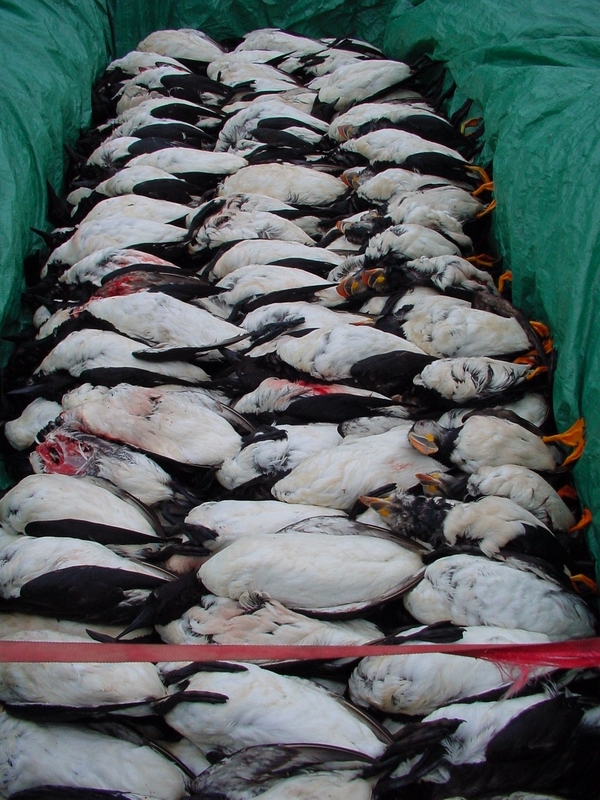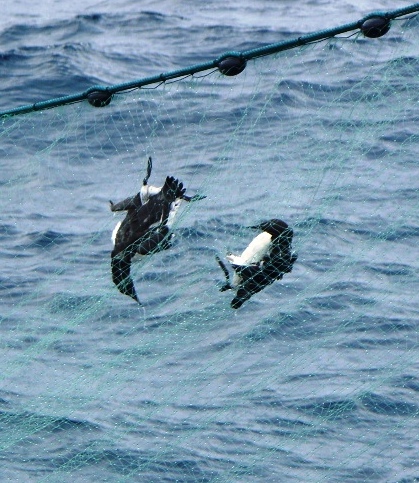Fishing gear devastating to seabird population

A new paper published recently by PhD candidate Paul Regular along with Drs. Bill Montevecchi and April Hedd, Department of Psychology, and Drs. Gregory Robertson and Sabina Wilhelm of Environment Canada, is providing evidence to support the long-held belief that fishing gear has had a devastating impact on the numbers of Atlantic puffins, common murres, razorbills and northern gannets.
“When the cod fishery collapsed and the moratorium began, loads of gill nets were removed from the water, creating a large unnatural and unprecedented experiment,” said Mr. Regular. “Those nets were known to inflict huge mortality on diving seabirds, so the release from that mortality allowed their populations to increase.”
However, findings indicate the same was not true for surface birds like herring gulls and black-backed gulls.
“Surface-feeding birds had less discards to rely on inshore, close to their breeding colonies,” he explained. “There were fewer fishers tossing cod offal into the water, and seagulls were known to rely on that heavily.
“When that largely disappeared, they had a harder time raising their chicks, and it looks like their populations are going down as a consequence of that.”
The research team used information collected by Environment Canada during their standard census of seabird colonies and Fisheries and Oceans Canada’s fishing effort data to support their theories. In some cases they were able to directly compare the negative relationship between common murre numbers and how many fishing nets were in the water at a particular point in time.
“Using the population and fishing effort data, we could do some comparisons of the overall trends,” said Mr. Regular. “For example, herring gull populations were increasing before the moratorium and their population was doing great. Afterwards they were decreasing.
"Diving bird populations, on the other hand, were stable or increasing pre-moratorium, and now they are really taking off, so we think their population growth was really stunted by by-catch mortality.”
Mr. Regular says incidents of seabird mortality are greatest when fishers and birds are in the same place at the same time.
“In areas where there are a lot of forage fish, like capelin, they attract a lot of cod and diving seabirds, particularly the common murre. So the fish go to the hotspots, the birds go to the hotspots, and the fishers go to the hot spots and set their nets. This results in a culmination of interactions that generates hundreds of dead seabirds as by-catch.”
The researchers are hoping their findings will lend support to recommendations to protect seabird populations, such as the implementation of marine protected areas at known hot spots, and the use of cod pots, a selective type of gear known to catch fewer birds and higher quality fishes.
The paper has been garnering lots of attention since its release in Biology Letters and has been picked up by Nature magazine and Scientific American.
“The timing of our paper coming out worked out quite well. It was published a week after a global review that showed that around 400,000 seabirds are by-caught annually in gill nets. Those are big numbers. Yet it’s an area that has received less attention than by-catch from longlining. However, these studies are certainly creating more calls for management action and change.”